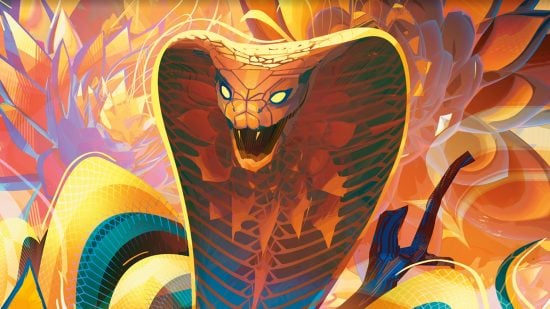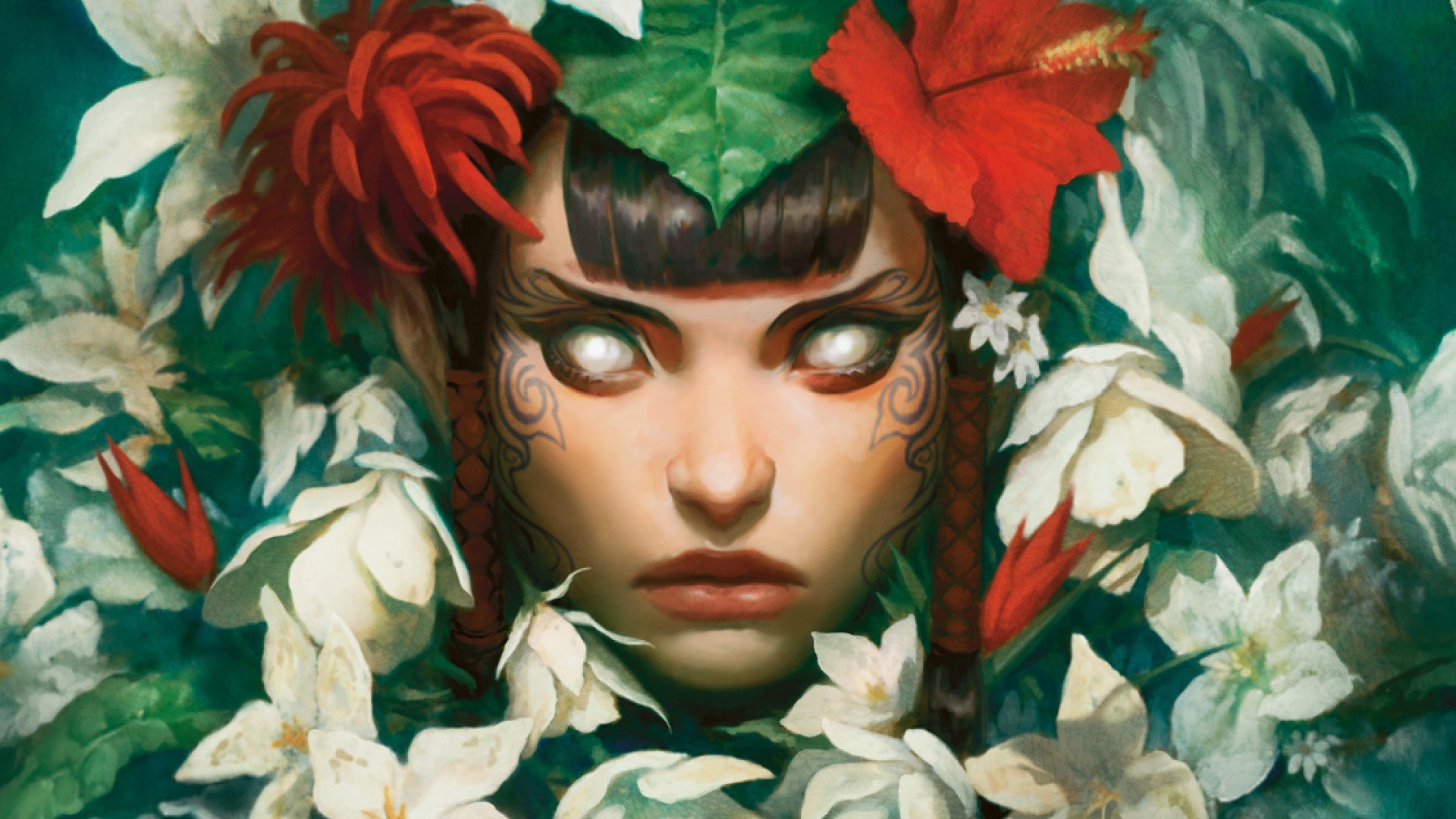What are all the MTG color combination names, and what do they mean? There are technically 26 different Magic: The Gathering color combinations that you could use when building a deck, and 25 of them have obscure lore-based names attached, which experienced players tend to use freely, but can be confusing for newcomers. This guide lists all the MTG color combo names, and explains what they all mean.
In short, every Magic card is associated with one or more of the five MTG colors – White, Blue, Black, Red, and Green – and cards matching different color combinations can be jumbled up in all sorts of ways when you build a Magic: The Gathering deck.
Beyond single color (or mono color) decks, there are 26 different MTG color combinations in total: 10 two-color pairs, 10 three-color combos, five four-color combos, and the mighty five-color combo. Each one has its own name, usually related to a piece of history from past MTG sets.
MTG color combinations
- What are allied and enemy MTG colors?
- Two-color combinations
- Three-color combinations
- Four-color combinations
- Five-color combination
Why do people use these names, when it takes no longer to say Black-White than it does to say Orzhov? Nerdiness – magic fans love to use the special nicknames that the community has invented for each color combo. You’ll end up absorbing them all through osmosis eventually, but this list should make things easier.

What are allied and enemy MTG colors?
Magic: The Gathering colors aren’t just for decoration, or even just for generating mana to play cards – each one denotes a distinct in-universe theme and a matching play style in the game. Green harnesses nature and beasts; Blue controls and cancels out enemy powers, Red aggressively mobs enemies with fiery damage, and so on.
But, to get to grips with the most popular color combinations, we have to go deeper – because the relationships between those different colors and their playstyles are a huge part of building powerful decks. We can describe those relationships in terms of ‘allied’ and ‘enemy’ color pairs – and they were built into the game from the beginning; they’re even printed on the back of each card, with neighboring colors in the classic pentagon pattern allied, and opposing colors enemies.

Allied MTG colors – like Green and Red, or Black and Blue – play somewhat similarly, and share prominent strengths and weaknesses with each other, allowing decks built on allied colors to build synergies more easily between cards.
Decks that combine together enemy MTG colors get none of that coherence or dedicated strategy – but they have the benefit that one color’s strengths can cover the other’s weaknesses. In a Black/Green (Golgari) deck, for example, Black’s superb card removal options can help fill a gap for Green – which normally relies on its big creatures to take your opponent’s cards off the board.
Both allied and enemy color combinations can contribute to making the best MTG decks; you just have to plan out what function each color is meant to perform within the deck – keep an eye on the ally/enemy status of each combo as you read on.
A helpful note before we start in on all those MTG color combo names: Magic color acronyms tend to abbreviate each color to one letter, so here’s what each letter represents:
- W – White
- U – Blue (to split from Black, which shares the same first two letters)
- B – Blue
- R – Red
- G – Green
Two-color combinations – MTG guilds
The two-color combinations, or MTG color pairs, are each named after a different guild from the plane of Ravnica, a world first visited by Magic in the 2005 MTG set City of Guilds. In Ravnica, each guild uses two colors of mana.
The Ravnica block was so popular, and its guilds so iconic, that the guild names quickly became synonymous with the color pairs. These MTG color combinations are often referred to as MTG guilds, whether or not fans are talking about Ravnica. The 10 two-color combinations are:
- Azorius: Blue/White
- Boros: Red/White
- Dimir: Blue/Black
- Golgari: Black/Green
- Gruul: Red/Green
- Izzet: Blue/Red
- Orzhov: White/Black
- Rakdos: Red/Black
- Selesnya: White/Green
- Simic: Blue/Green
Three-color combinations
The 10 three-color combinations get their names from two different places. Five of them are known as MTG’s shards, a reference to the Shards of Alara set, released in 2008. The set was themed around five miniature worlds called shards, which as you may guess, each included three colours.
The other five are known as wedges, and get their names from the five clans of Tarkir in the Khans of Tarkir block (2014).
While Ravnica has seen multiple revisits, Magic has yet to return to Alara or Tarkir since their first blocks, so these names can seem a bit more obscure. The 10 three-color combinations are:
- Abzan: White/Black/Green
- Bant: White/Blue/Green
- Esper: White/Blue/Black
- Grixis: Blue/Black/Red
- Jeskai: White/Blue/Red
- Jund: Black/Red/Green
- Mardu: White/Black/Red
- Naya: White/Red/Green
- Sultai: Blue/Black/Green
- Temur: Blue/Red/Green
Four-color combinations
The five four-color combinations technically also have special names, which come from a cycle of cards called Nephilim from the 2006 set Guildpact (part of the first Ravnica block). These names have pretty much died out, but you might still hear them around, so here’s a quick translation:
- Dune: WBRG (No Blue)
- Glint: UBRG (No White)
- Ink: WURG (No Black)
- Witch: WUBG (No Red)
- Yore: WUBR (No Green)

Five-color combination
There’s only one five-color combination you can make in an MTG deck, as, well, that’s all the colors!
You don’t come across five-color MTG decks very often (mostly because they’re mechanically torturous and very difficult to get to work), and they don’t get a cute lore nickname because they’re too rare. You will occasionally see them referred to as “WUBRG”, though – all five letters together at last.
When players do run five-color decks, they’re most often built around specific, powerful creatures and spells that have all five colors of mana in their mana cost – most of which are dragons, such as Niv-Mizzet, and Ramos, Dragon Engine. Our all time favorite five-color card, though, has to be Tom Bombadil, from MTG Lord of the Rings.
No dragon will ever be as merry a fellow, nor wear boots as yellow.
For more Magic analysis, check our guides to the best MTG commanders and the latest MTG release schedule. Or, to keep up with the latest Magic news, bookmark our MTG news homepage and follow Wargamer on Google News.



